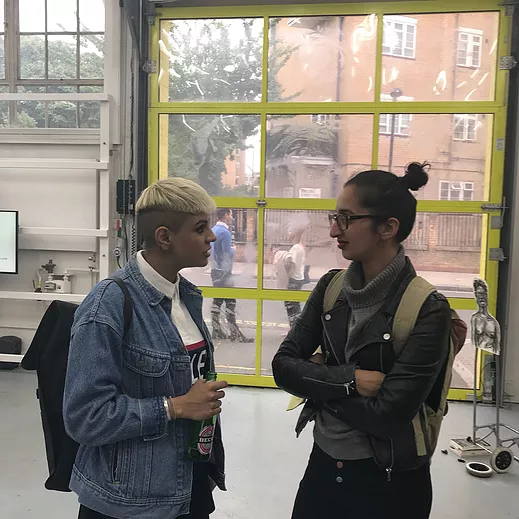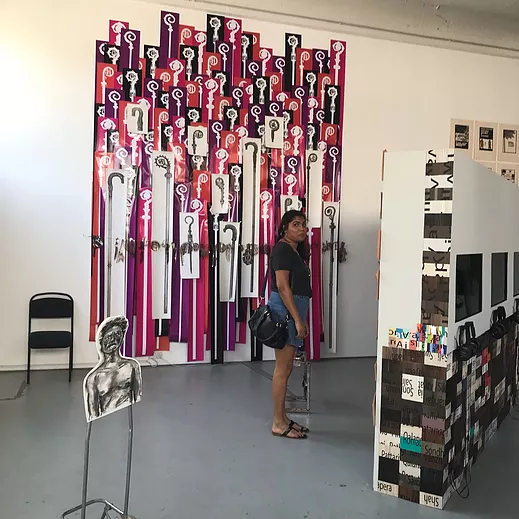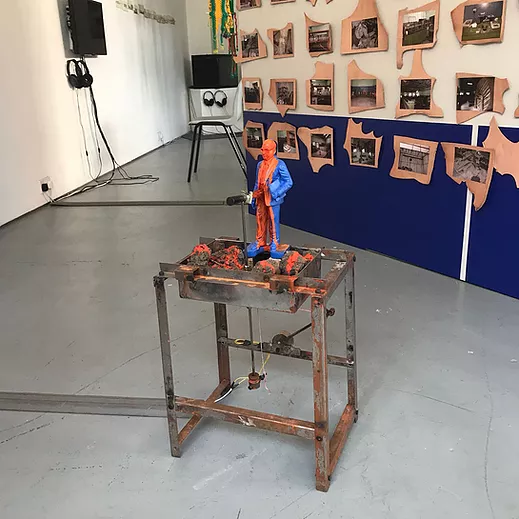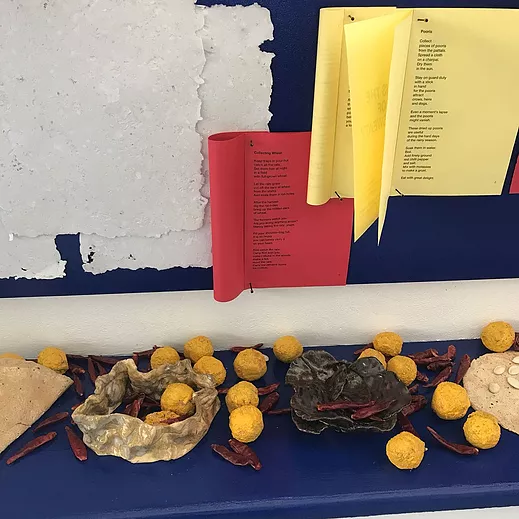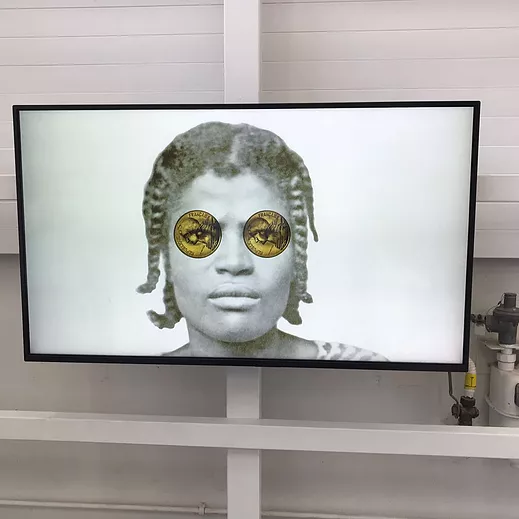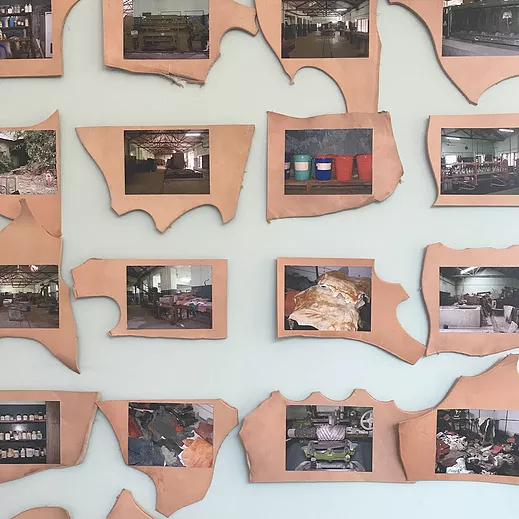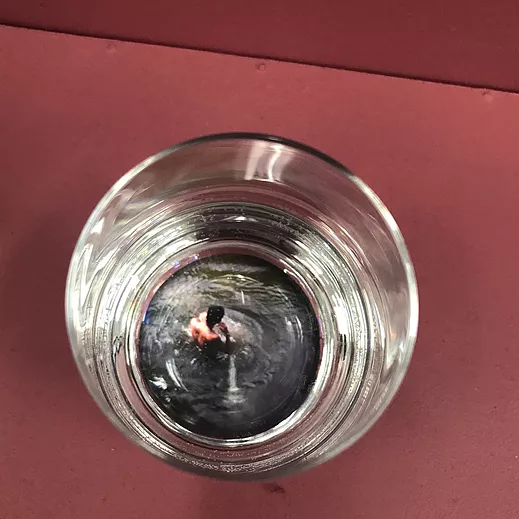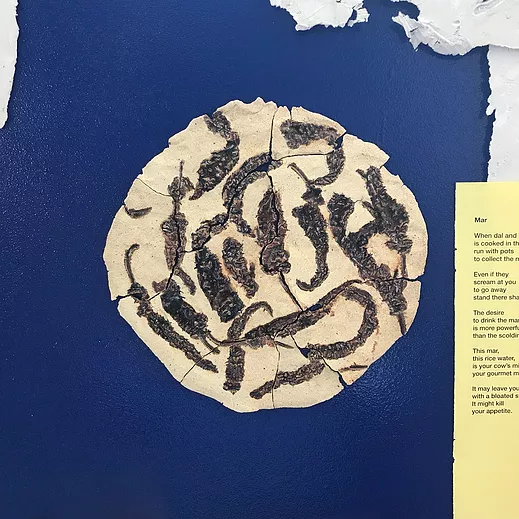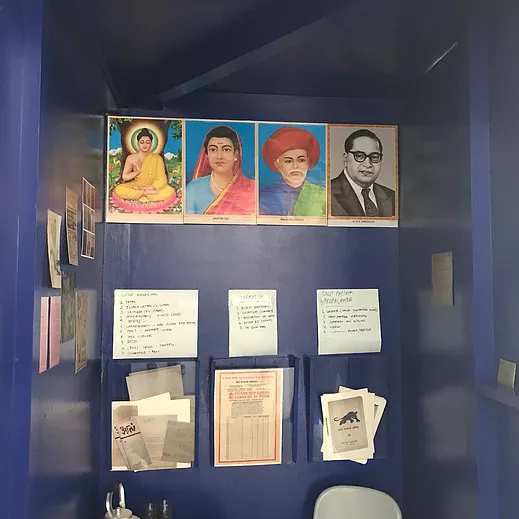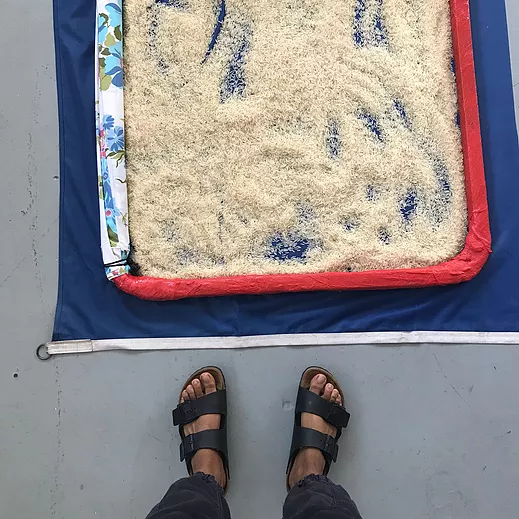Working Practices: A collaboration with Clarke House Initiative @ the Showroom
ZM & Seema Mattu
Emoji summary: 🔗 🔇 🔎
INTRO: This week’s text is a long one, and rightly so. this show brought up a lot of things, aligned itself with things i care deeply about in such a way that i should address it with my full attention. This text has been co-written by our dear friend Seema Mattu. As well as being an excellent n ludicrous artist (who has appeared in our Zayn Malik Zindabad screenings and was our web resident in October 2017) Seema runs Tomboy UNLTD, an art initiative sparking minority discourse through video, performance and events. She says: “we focus particularly on digital media as a convo-filter and recognise the need to platform such practices, in addition to shifting art traffic from London to non-London within the UK.” Seema has been a dear friend for many years, and i have a lot to thank her for, but mostly mostly i have to thank her for her unwavering demands I educate myself in the politics of caste, and understand her position as a fierce and furious activist. i would be an incomplete circle without her dedication to calling me out and i will cherish her generosity with that always. I have asked her to write this text with me because there are territories within this show where my knowledge collapses and my opinion becomes a soggy irrelevant; where she speaks with firm definition, I only concur and amplify the words she says, like hypeman n affirmation. There is also an addition from Amrita Dhallu (via our WhatsApp group chat). Amrita is a curator and facilitator who works across London and Birmingham. She currently holds the post of Curatorial Assistant: Commissions at Chisenhale Gallery, London, n previously Curatorial Trainee at INIVA. Her work focuses on providing support structures for emerging British artists of Black and Asian descent, through commissioning, creating networks and establishing intergenerational learning spaces. Her current research looks at radically positioning care and wellbeing within formal arts education in order for artists to re-think ways of professional development.
ZM: I didn’t think I wanted to write about this show; it rested in a sticky awkward part of my mind, I saw it on the opening night and I didn’t know what to think. This week’s text is a review of Working Practices @ the Showroom. This show is a massive group show in collaboration with Clarke House Initiative, a gallery? Institution? Arts agency? (Idk) based out in Bombay. Clark House describes itself as a ‘curatorial collaborative and artists union concerned with ideas of freedom’; and I’m not too sure what that means in practice, but theoretically, ye sound. Most of the artists in this show are Clark house members or involved with them as an institution to some extent, and throughout the show there is the underbelly of caste politics as binding and framing for the show.
I think I was torn for a bit, like should i explain what caste is, the intricacies of caste politics, if u don’t know then should we be forced to do the labour of explaining? but tbh this is a rly good article that breaks it down n explains it well, as concept and affect, so read this before as required reading/primer, it’s not long at all, only a few short paragraphs. i will say also that caste is different to class, it has a different weight n feel, but often sits parallel to the way class works in india and also the wider SA diaspora; in terms of access, institutional oppression and gatekeeping. Also, the British government doesn’t include caste based discrimination or harassment in any of its discrimination legislation, it treats it as an aspect of race; which is too opaque and bungled as an understanding, and we need better protections from our literal government tbh. Caste is insidious and perpetual, a root that many have attempted to overhaul and pull out, legislate through and navigate; but those in power rarely hand over their keys, lend a seat at the table willingly. It is a milleniums old system, yet it is still not a thing of the past n it has very contemporary affect, even out here in the UK, in this here diaspora. It is a fundamental foundation of the Hindu Nationalism that is sweeping India (and tbh out here in the UK and over in the US), and I can assure u that any and all Hindus for Trump are upper-caste twats; bc the way caste works is parallel to the model of racialisation, in that upper-caste hindus have a privileged proximity/adjacency to whiteness in a specific way that means they function societally (often) as white.
Ngl, for me this is a weird shape for me to hold. I read the press release n felt a void between what I saw n what I read; the press release only glances at the terminology of caste politics as a fleeting one that maybe informs some of the artists’ practices, yet it felt like a binding element in majority of the works (I counted 20 out of 29 of them). NoW, I will be the very last person to insist that an artist making from a marginalised identity talk about their specific identity as the be all and end all of the politics of their practice. In fact, maybe in that void between what I saw and what I read, I am being an asshole in assuming this wasn’t an intentional void. Maybe this was a conscious and political decision to not make a Big Deal™️ of it n let the artists work speak for itself. I can’t read it, honestly. Like I cannot gauge the void I felt, I can’t describe why it felt like a gaping void also. Maybe because caste was so unambiguously present within so many of the works; one piece (by Prabhakar Kamble) being a sculptural work of a blue statue of Dr Ambedkar being painted orange by a mechanically operated paintbrush; another (by Yogesh Barve) being a series of photographs of leather making techniques, mounted on lil scraps of leather; a third, (by Rajyashri Goody) a series of publications exploring and documenting the link between caste and food, and mounted above them, the Manusmriti, a Hindu book written in 200BC that lays down the very laws of the caste system, pulped up and flattened back into a bright white sheet of paper. This is unambiguously a guiding political thread, no!? I felt a hesitancy, maybe even like a pulling of the punch, when I read the press release. I wana know who wrote it; was it the artists? Was it the showroom? Whom!!? I think that would help me figure out where that decision falls n how to read it. Bc it felt like a flat landing rather than a slap; where the press release n writing around the show should’ve supported and held the works, instead it contradicted them (perhaps even silenced them partly) n I wana know if this was a choice by the artists to speak selectively n exclusively, without performing their identities for a white or brown upper caste audience; a decision I hugely respect n support /// or a gap n void in understanding from the showroom, a p white blunder.
SM: The press release did also draw a parallel between Dalit identity n blackness but it felt more like my own BLURRED VISION. I loathe sentences that wrangle in communities and make them feel responsible for an underwhelming performance. These peoples deserve more, in terms of representation, discourse and voice. Anti-blackness is R-i-F-e in the caste system alone, so to marry and compare the two is simply ludicrous.
ZM: OOO pls say more
SM: I just mean that I didn’t see enough blackness in it for it to be deemed a main theme. To say it’s a show about that as a main theme when it didn’t feel caressed enough. Also there’s blackness in itself and blackness with actual SA proximities, which is different n does directly correlate to caste
ZM: Honestly friend, i also feel the same, but i also wonder what this did. like why, what was the purpose of drawing these parallels n it feeling like a shallow channel? what does that do? idk but w this specific loaded political gun, i feel like it can’t quite be just a collapse in curation or anything like that at some <any> group show. but maybe i am lading it up too much… i am not sure not sure.
~~~
SM: As an artist + icon i make freaky gay vids so lets chat ‘bout those in the show: OBVIOUSLY the dyke in me loves a good docUmentary, but since this show, I’ve had one (even more) burning question: ~ wots new in the depiction of struggle?? ~ There were sev-er-al, not even video works, but documentaries being shown at the same time in different spaces that melted into one. it brings me back to my Q: wot IS new in the depiction of struggle!!! because this is not - this comes across complacent, one-sided and lacklustRe. I’ll tell ya why, friends: the idea of a million videos in one space is like having 7 TVs on in the same house - WE CAN’T HEAR U. Sometimes, the problem with video-heavy shows is that you end up seeing 4 seconds of one doc before ur over it and walk past the rest. if you have multiple moving image works of something a bit more engaging/fre$h and perhaps visually present, like Julien Cruezet’s Dormir, it tends to speak more in this kind of setting? <^
I no longer want to watch dox about WOT caste is - tell me WHY it is. tell me WHY we still deal with this even today from fellow SA brownies. Give me a documentary which tackles the issue and doesn’t just affirm it’s existence.
ZM: (Julien’s work was a weird mash up, like halfway between music video and illuminati confirmed me trash content from reddit; a spiralling n flashing presentation for the eyes, with whispered hushed asmr vocal tones n a beat. Like if young thug makes music for respected scholars and self-made businessmen; then this was a music video was for woke kids with potential but not enough motivation to dress cool, and small cats falling asleep.)
BuT, Amongst it all though was a work that proper grabbed me: Amol K Patil’s ‘Lets clean our hands!’ Just on a shelf at waist level, mounted clean on the gallery wall; a glass of water, three quarters full. As I looked from the side I was baffled, I thought someone had put their drink down on a random lil shelf n when I went to go grab it I looked down and saw a small circular video playing at the bottom of the glass. A brown body washes itself in a river, head dipping under the water, skin shining in the sun. Small and perfect, a kind of singular intimate isolation while being completely open also; it was a level I appreciated and admired. The kind of work that doesn’t assume or announce itself. Whole and full, a perfectly drawn circle, it was what I want 〰️ this emoji to mean. A stable, gestural form, small p political, and oh so so beautiful in its smallness. I am rarely touched by work; I have felt v touched by things recently, n maybe it is bc I am a freshly picked scab atm (pink and bleeding on the skin surface) I am open to being Moved. But I am glad (!) reader for the affect of this work; a quiet stillness and a small magic.
SM: ^^ it really was a small magic, like the gloriously framed videos of various catZ hanging up in Umbridge’s office. According to the list of works, Lets Clean our Hands! represents a prote$t of sorts - but I already knew this. (from young I conditioned myself to view any work with the most naked eye possible, just to prevent immediate pollution to my mind) tbh FINE I didn’t even notice the thing first, much like Z i thought the glass was left on the side for no reason. But as soon as we saw it we GASPED and my butt cheex clenched like a cheese twist from a Sainsbury’s bakery. Lets Clean our Hands! works as an equation:
glass of water = simple act of bathing = simple act of existence
^^ Indeed, it is an extremely soundproof protest of existence whose effect is only strengthened by the HUMBLE FORM OF SHOWING A TINY VIDEO ON AN IPHONE. PROBABLY 5C AS WELL. Because of it’s simplicity, I wanted to drink the literal water, and with it consume the complexities the subject matter niggles at.
But ultimately, this show felt 2 Hindu 2 be true (this sounds like a title of an album by raghav ). As a living, breathing untouchable, I found it v difficult to engage personably with the subject matter in front of me - which I think is super important from a viewer’s POV, where discourse around caste politix is begged for. I was pulled FURTHER into the ignorant abyss when the curator, a high-caste delhi-clad man, claimed to be the “the odd one out” - there’s no such thing as a high-caste victim sorry bye. But 4 real, I feel like this echoed (first silently) from the moment we stepped into the spot and gradually became louder, and then deafening (for me).
ZM: (Seema is talking about how we went to go see this show for the first time at the opening, n again we were troubled and it’s hard not to let that encounter guide our experience of the work, even when revisiting. While normal private views are an uncomfortable mix of small talk and seeing people u know but don’t rly know, this opening was full of familiar faces I was glad to see; but overshadowed by an uncomfortable talk by one of the curators (I think?) where he guided us round the show and, like a primary school open day, introduced artists and spotlighted them to talk for 5 minutes about their work. This dynamic was hugely uncomfortable, as an (I presume) upper caste man guiding and demanding attention as a figure of authority over a group of majority Dalit artists, to an audience of lots of Well Intentioned White People™️ and other fairly affluent Asians. Idk idk I didn’t know what to do with that experience tbh other than concur w her words and uncomfortability n support her navigation of that)
SM: I’ve gotta say tho, there was something about the show that I did appreciate. It felt like walking into an air of effort, even an act of service if you like - and it reminded me of something my dad always says: watch closely and you’ll see major differences in how indians from india provide a service compared to a service provided in the UK, or another country. Even down to the endless presentation and time slots given to each artist at the opening, everything felt like a service intended to impress the upper classes. Appreciate but idk, bit weird.
The show also felt quite, neglected in parts. Works by Yogesh Barve, Jithinlal NR and Saleh Lo can be found unnecessarily in a corridor with literal BROCHURES underneath it like this was thomas cook and i was doing what I’m told + going back home. It’s disRSPECT - when a space is as a fairly large as this one, it doesn’t need to be utilised so bizarrely. Again, this possible afterthought pertained to that same notion in my head of service. The Ambedkar piece, for example, is situated upon entry because it was centred around a figure that is able to act as a commodity for white and upper caste eyes. it feels more celebrity, so more alluring.
ZM: i don’t think either of us will be able to navigate this show beyond these uncomfortabilities and sticky patches on the floor.
NOTES FROM THE GROUPCHAT: Amrita Dhallu: the exhibition does not address the significance of caste politics in this country, and how does the work relate to the British context? I think that is important, if you have viewers who see the show, and never heard about caste, they just assume it is an issue that happens in india only and that it is just a thing that occurs elsewhere. It speaks to this wider question of, why do institutions “import” ideas around identity politics and choose not to deal with it on their front door. With Soul of a Nation (Tate Modern, 2017), they looked at african american art, but when will they look at Black British art. It is the easy option for art institutions, they will continue to ignore what is going on here, in Britain. it is easier, because it is more remote, more abstract, and they do not have to deal with it and so audiences receive limited information, and go away thinking the same thing.
ZM: Even though individual works shone out at us (like Amol K Patil’s quiet magic, Rajyashri Goody’s publications that i’ve still got on my nightstand, Julien Cruezet’s whispering film, like soft arms to fall into, with sharp sharp nails) the looming shadow of the curation fell over it, and like a wonky eyebrow i didn’t know what could be done to fix it, I only know the left one (curation) didn’t match the right (the works) and it threw me for 6, inner ear canal balance out of whack. this text feels like a mess we are talking around, and i can’t contain it bc it was all too sprawling.
Working Practices was a collaborative project between Clarke House Initiative in Bombay and the Showroom. the exhibition closed on the 7th July, and I am sorry to have written about a show you can’t now go and see to make up your own mind, i just feel like i should write about it, and not mentioning it felt like a kind of biting my tongue, a self-censorship. Hope this all makes sense post-.
Tomboy is on the internet here and here [insta & twitter]. they are hosting a screening called lgbt + F: planet 2028 @ Lux on the 20th July, find tickets here
